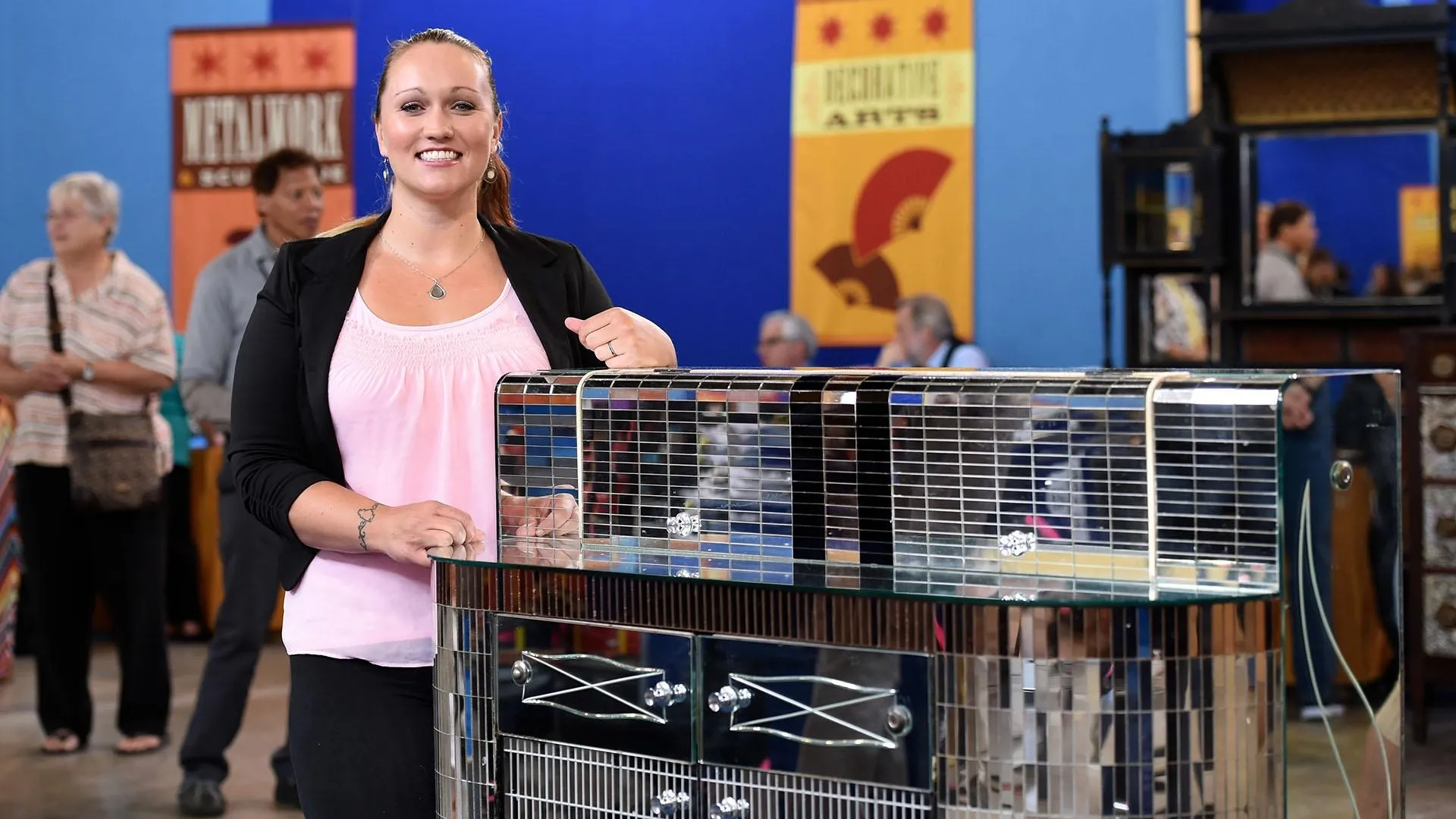GUEST: I got it from my grandfather through my mother. My grandfather supposedly had brought this from Sweden when he came over to this country.
APPRAISER: When was that?
GUEST: Well, he was born in 1877 and emigrated at age 19 to Canada, and then down to DeKalb, Illinois.
APPRAISER: Was he known as a wood carver?
GUEST: No, not at all. I believe he probably brought this with him.
APPRAISER: I would question whether or not it actually came from Sweden, just because it has these two American flags flying...
GUEST: I noticed those.
APPRAISER: ...broadly on that building. I wonder whether or not this is more of an allegorical story of his travel from a town in Sweden to America. And if you look along here, you can see that these buildings on the horizon here are not American buildings, but rather more of a European-looking city. You've got this great body of water, and then you get down to the scene in this town, these wonderful formal buildings, and it's relief carved, which means that this is one piece of wood, and they carve back to get this three-dimensional quality. Let's look at what this is made from, and I'm going to flip it around quickly. It's a piece of found wood, and it is probably just a piece of birch, and I believe it is the backboard of a chest of drawers. You can see there's chamfering on your side here, and chamfering on my side, but not on the tops and bottoms. So it would have fitted into the side panel, birch an American wood. And then while this is showing from this side, let's look at this other very whimsical thing that he's done by inlaying pieces of colored glass, which of course are going to show through the windows in the buildings on the other side. There's a few pieces missing here obviously, so with a light behind it, you'd get some really very lovely effects. What has happened to this side of this panel?
GUEST: Well, I believe my mother had an art student attempt to restore it, and they got that far. I don't think it's done professionally.
APPRAISER: Right, well, actually, I'm sort of pleased that we get to see this color coming through here, because if you check the difference between this panel, which has been cleaned clearly, and then the rest of it, you see there is a muddy quality to most of the panel because it was varnished, and that varnish oxidized and turned dark. But here, the varnish has been removed, and honestly, nine times out of ten on the ROADSHOW, I will say, "Don't touch things," but I think this is actually a very good job. They've taken this paint back to a dry, dry surface, which is what folk art collectors look for when they're looking for original paint. Look at how bright and lovely the color is on this side compared to... and especially in the dog. You can see his bright, bright white body, and brown ears, and on this side of the tree, as he's running through, he's a little dull on that other side.
GUEST: Certainly is.
APPRAISER: Well, I think for auction purposes, we would probably estimate it in the $3,000 to $5,000 range.
GUEST: Oh, very nice. That's very good.



